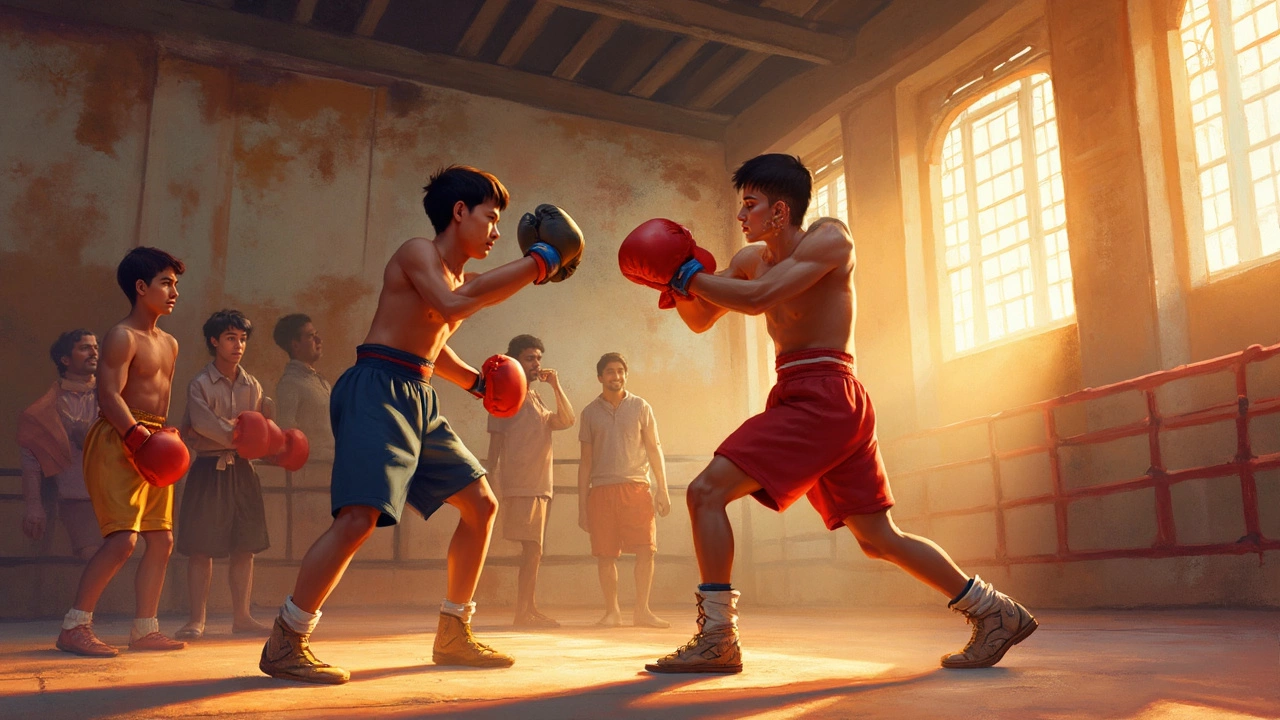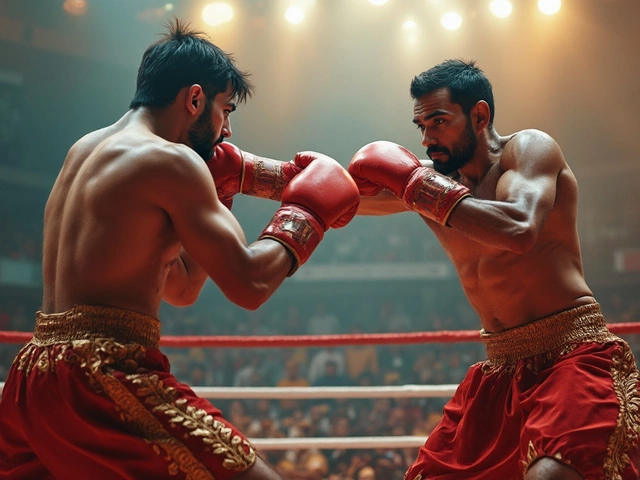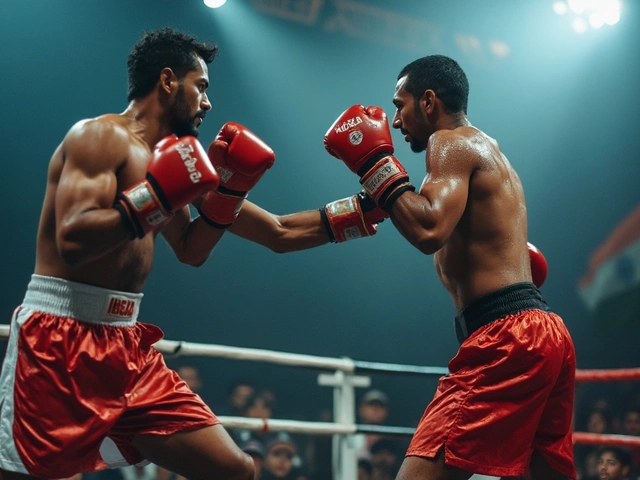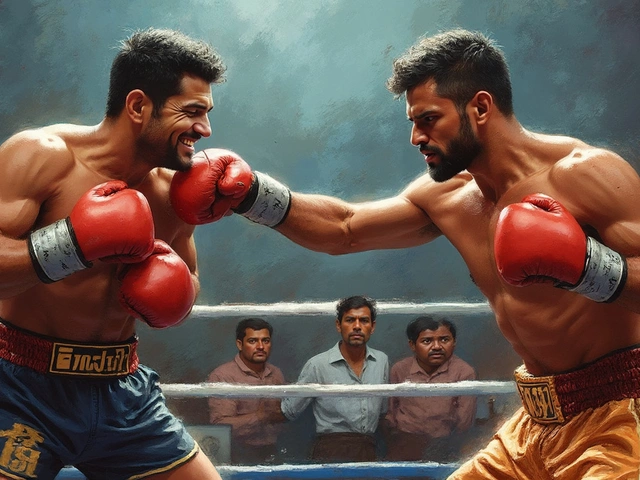Boxing, a sport rich in history and technique, is more than just throwing punches. Among its arsenal is the enigmatic 7 punch. Curious about what sets it apart? Let's break it down. The 7 punch is part of a numbering system used by fighters and trainers to quickly communicate specific punches and combinations. Imagine it as a secret code that turns chaos into strategy.
But what exactly is this 7 punch? Essentially, it's a hook thrown with the lead or back hand, often aimed at the body. It's one of those moves that can surprise your opponent, especially when mixed into a sequence of punches. You might not see it in every fight, but when it's used effectively, it can turn the tide.
Why bother with the 7 punch, you ask? Well, it's all about versatility. A well-placed 7 punch can break through an opponent's defense, especially if they're guarding their face more than their midsection. It's about reading the opponent and knowing when to unleash your hidden weapon.
- Brief Overview of Boxing Punches
- What is the 7 Punch?
- Execution Techniques for the 7 Punch
- The History Behind the 7 Punch
- Why the 7 Punch is Important
- Tips for Practicing the 7 Punch
Brief Overview of Boxing Punches
Boxing isn't just about throwing your fists around. Each punch has a purpose, and mastering them can make or break your performance in the ring. Let's take a closer look at some of the key punches every boxer needs to know.
Jab
The jab is a boxer's bread and butter. It's a fast, straight punch thrown with the lead hand. While it might not be the most powerful punch, it sets the pace for the rest of your fight. It helps you keep the distance, set up combinations, and probe your opponent's defenses.
Cross
The cross is thrown with the rear hand, making it one of the more powerful punches. It's a straight punch that comes across the body, packing a real punch when it lands. Think of it as a follow-up to the jab, putting strength behind the speed.
Hook
The hook is a sweeping punch that can target the side of your opponent's head or body. You use your lead hand for this punch, and it's perfect for close quarters where straight punches might not be as effective. Landing a solid hook can turn the tide in your favor.
Uppercut
The uppercut was made for those moments when you and your opponent are up close and personal. It's an upward punch aimed at the chin or body, thrown with either hand. If executed well, it's a game-changer, slipping right under your opponent's guard.
Overhand
The overhand is like the cross's more aggressive cousin. It's an arcing punch that aims overhead, hoping to catch your opponent by surprise. While it takes a bit more time to execute, the power of a well-landed overhand can be devastating.
These punches form the basis of any boxer's toolkit, but it's how you combine them that makes them truly effective. From beginners to pros, understanding and mastering these punches is crucial in honing your skills in the ring.
What is the 7 Punch?
Ever felt like boxing is a language of its own? The 7 punch is a prime example of this. In the world of boxing, punches are often numbered for quick communication between coaches and fighters. The 7 punch specifically refers to a hook, typically delivered with the lead hand, aimed at the head or body. It’s kind of like the ninja of the boxing punch world; not always noticed, but super effective when it lands.
Now, you might be wondering why this punch matters. The 7 punch is especially useful because it sneaks around the side, rather than coming straight down the middle. Why’s that a big deal? Because many fighters have their guard up for straight punches, and a hook can bypass that defense.
How Does It Work?
An effective 7 punch requires the right technique. Here’s a simple breakdown:
- Bend your knees slightly. This gives you a more stable base and generates power.
- As you throw the punch, turn your hips and shoulders. It’s not just an arm movement; your whole body is involved.
- Keep your non-punching hand up to guard your face. Safety first, right?
- Aim the punch around your opponent’s guard. You're targeting those open spots.
Sounds simple on paper, but mastering it takes practice. You’ll find that the 7 punch is one of those techniques that can really surprise your opponent, catching them off guard when they're expecting a more direct attack.
Why the Hook Technique?
You might ask, why a hook, particularly as the 7 punch? Well, hooks are less predictable than straight punches, and they strike at angles that can take opponents by surprise. In boxing, unpredictability can be your greatest ally. The 7 punch adds that element of surprise into your sparring sessions or matches, which can be crucial for gaining an upper hand.
Execution Techniques for the 7 Punch
So, you want to master the 7 punch? Getting this technique right can give you an edge in the ring. It's all about accuracy, timing, and a bit of flair. Here's how you can nail it every time.
Body Position and Stance
Your stance is the foundation. Start with your feet shoulder-width apart and slightly bend your knees. Keep your non-punching hand up to guard your face. Your punching hand should be level with your chest, ready to spring into action.
Creating the Hook
The essence of the 7 punch is in the hook motion. Unlike a straight punch, this one arcs from the side. Pivot on your back foot as you swing your lead arm to the target, keeping your elbow bent and parallel to the ground. Don't forget to rotate your hips for power.
Focus on the Target
Accuracy is key. Aim for the opponent's body, specifically the ribs or liver for maximum impact. Visualize your target as you unleash the punch, ensuring every motion is precise.
Tips for Power
- Keep a relaxed arm until the moment of impact to prevent telegraphing your move.
- Throw your shoulder into the punch for added force.
- Practice snapping the punch back quickly to reset your guard position.
Feel the need for more data to guide your technique? Here's a basic breakdown:
| Element | Best Practice |
|---|---|
| Foot Pivot | Pivot 45 degrees |
| Elbow Position | Parallel to ground |
| Target Area | Ribs/Liver |
The 7 punch isn't just about power; it's about surprising your opponent. By varying your punches and incorporating the 7, you keep them guessing, which is half the battle won.
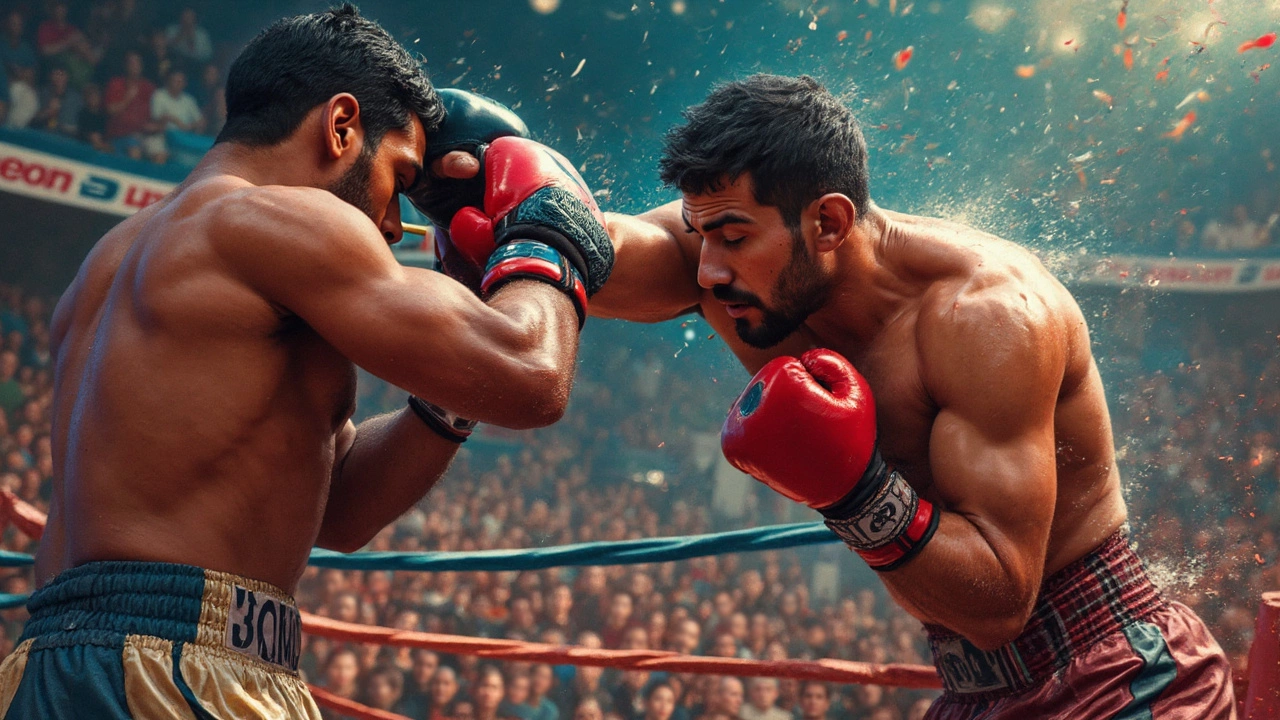
The History Behind the 7 Punch
Boxing's long history has seen many techniques evolve and adapt. The 7 punch, like other parts of the punching numbering system, emerged as a way to simplify and systematize communication between boxers and their trainers. This system, now common in gyms around the world, allows for quick and precise instructions during practice and matches.
Originally, these numbered punches were part of a broader effort to create a universal language in the sport. It's believed that while the exact origins aren't clear, the practice gained traction in the early 20th century, largely thanks to fighters and trainers in the United States.
"Boxing isn't just a sport, it's a language of its own. Every punch tells a story, and knowing when to use them is key," said renowned trainer Freddie Roach.
The 7 punch, specifically, gained recognition as fighters like Sugar Ray Leonard effectively used variations of it in their bouts. The technique's ability to disrupt an opponent's rhythm created new opportunities in the ring.
The Evolution of the 7 Punch
As boxing styles evolved, the 7 punch was refined to suit different strategies. In the 1980s, the punch was frequently used in combination with jabs and hooks, leading to its inclusion as an essential part of a fighter's combo repertoire.
Modern Adaptations
Today, fighters still rely on the numbering system for its simplicity and speed. The 7 punch has become more than just a technique; it's a strategic element that, when used sparingly, can catch opponents off guard.
Understanding its historical roots and adaptations helps fighters appreciate not just the technique but the art of boxing itself, blending tradition with tactical innovation.
Why the 7 Punch is Important
The 7 punch might seem like just another move in the fighter's toolkit, but it holds a special significance in boxing. Its importance comes from its strategic use and effectiveness in both offensive and defensive maneuvers.
The Element of Surprise
One reason the 7 punch is a big deal is because of its surprise factor. Unlike straight punches, which an opponent can see coming, the 7 punch hits from the side. This angle not only disrupts the opponent's focus but also opens up further opportunities. In head-to-head combat, catching someone off guard can be the difference between losing and winning a round.
Versatility in Combinations
Another reason to love the 7 punch is its versatility. It's not just about the punch itself, but how you mix it into combinations. Imagine hitting a quick jab, then a cross, and finishing with a 7 punch. This unpredictable pattern keeps opponents guessing, and when they can't anticipate your moves, they've already lost half the battle.
Leveraging Body Mechanics
When executed correctly, the 7 punch uses the fighter's body mechanics to generate power. This involves shifting weight and rotating the torso, all contributing to a punch that's not only fast but also powerful. Fighters who master this technique often talk about how it gives them a boost in confidence during matches.
Practical Stats
| Punch | Average Speed (mph) | Efficiency % |
|---|---|---|
| Jab | 20 | 75 |
| 7 Punch | 25 | 85 |
As seen in this table, the 7 punch isn't just about being unexpected. It often packs more speed and efficiency compared to the standard jab, making it a preferred choice for many experienced boxers.
Conclusion: A Fighter's Secret Weapon
So, why the hype around the 7 punch? It's a versatile, effective, and surprising move that can turn the tide of a match. Understanding its importance helps fighters make it a part of their strategy, increasing their chances of landing impactful blows and staying ahead in the fight.
Tips for Practicing the 7 Punch
Getting the hang of the 7 punch takes a bit of grit and a lot of practice, but it's worth every drop of sweat. Here are some solid tips to help you nail it.
Start with the Basics
Don't jump straight into complex combinations. First, ensure your stance is solid. Your feet should be shoulder-width apart, knees slightly bent. This stance gives you balance and helps with the momentum needed for the punch.
Perfect the Motion
The 7 punch is all about that hook motion. Practice first without focusing on power. Focus on the fluidity, keeping your arm relaxed until the moment of impact. Work on pivoting your feet and rotating your hips for added force.
Drill the Delivery
Set up drills to practice different scenarios. Try incorporating the 7 punch after a jab or a straight. Practicing with a partner can also help you understand timing and distance better.
Shadow Boxing
Shadow boxing is an excellent way to perfect your technique. Do it in front of a mirror so you can see your form. Visualize an opponent and practice different sequences that include the 7 punch.
Speed and Accuracy
Once you've got the form down, use a heavy bag to work on speed and accuracy. Target specific areas on the bag to simulate aiming at an opponent's body.
Fitness and Conditioning
Building endurance is crucial. Incorporate cardio and strength training into your routine to ensure you can perform at your best during extended bouts.
Feedback and Adaptation
Record your practice sessions. Watching yourself can reveal habits or mistakes you might not notice in real-time. Keep adapting your technique based on this feedback.
| Component | Focus Area |
|---|---|
| Balance | Stance and foot placement |
| Power | Hip rotation and momentum |
| Timing | Proper sequencing in combinations |
Practicing the 7 punch might seem challenging at first, but with perseverance, you’ll see serious progress. Keep at it, and remember, even small improvements are steps toward getting ring-ready!
